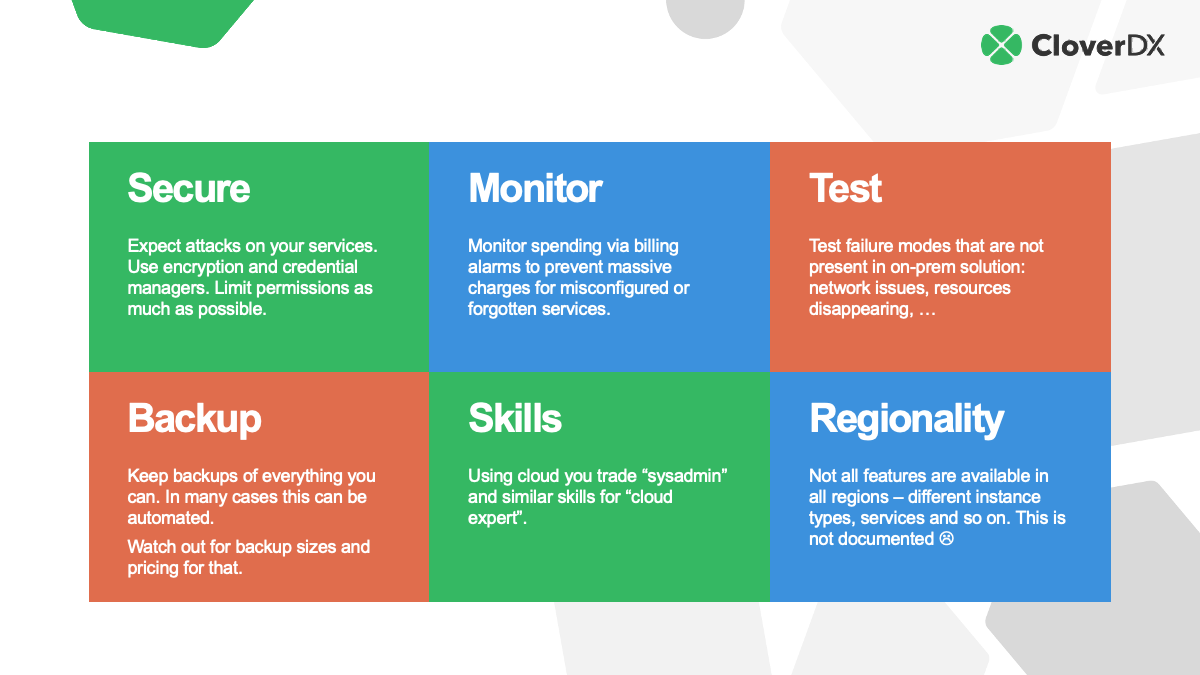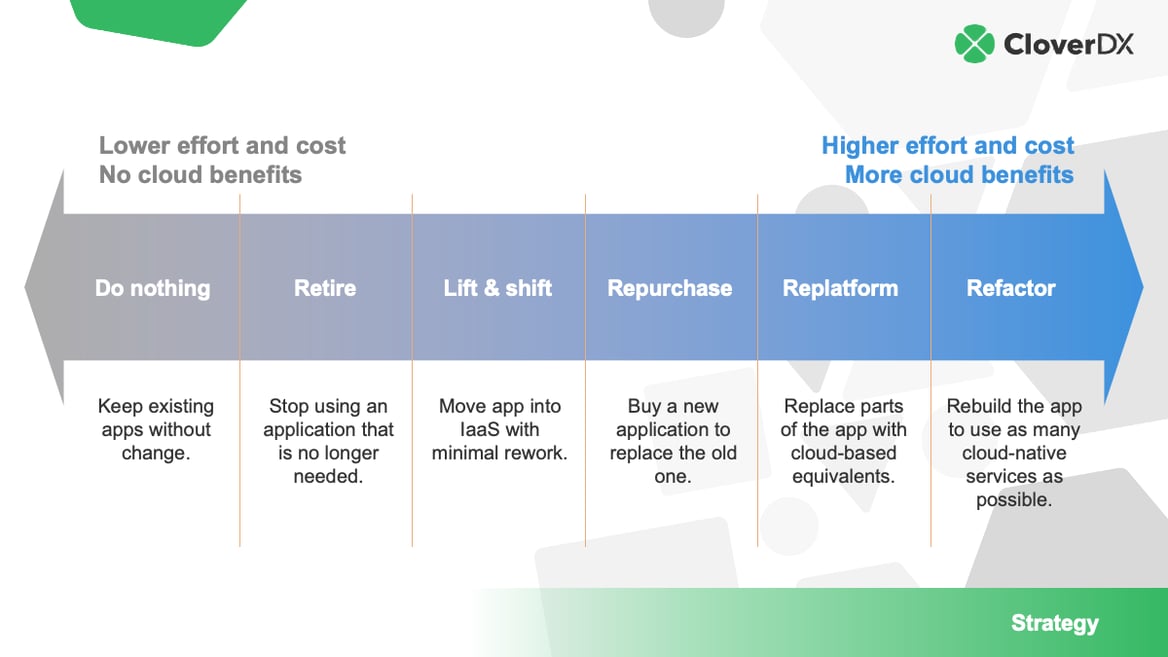More than 70 percent of companies have migrated at least some workloads to the cloud, and it's clear why.
There's the draw of efficient and secure remote working that has become so necessary since the beginning of the pandemic. And of course, there's the increased ROI, valued at four times that of an on-premise data center.
Choosing to migrate to the cloud is a simple decision for many, but the actual move isn't something to rush. There are more than a few things that need to be considered first.
Watch the video
This post is based on the Migrating Your Data Workloads to Cloud webinar - watch the full video here.
Luckily, there are some proven best practices that will help. Let's take a look at some of them now.
Considerations before migrating to the cloud
Before committing to any course of action, there are a few things you need to take into account. We've compiled a list of the main areas you should evaluate ahead of your migration:

Security
Some cloud providers use their own encryption, meaning you get the benefit of having your cybersecurity managed by experts. However, you still need to be certain everything is configured properly. And, it can also mean increased protocols with message sending and file sharing.
Monitoring
Monitoring is important to keep track of what costs you're running up. It also allows you to set up alarms and notifications for applications that are running and costing you money.
Testing
The cloud doesn't test for you, but it does make it easier. You can use virtual machines or infrastructure as code to test the code and some of the infrastructure.
Backups
While backups are absolutely necessary, there are still the considerations of what data to back up and how you want to do it. Cloud storage providers do have different tiers of data storage. How available you want the data to be and how quickly you need it to be read will impact your decision on which storage option to choose.
Skillsets within your company
Depending on the type of cloud migration, you might need a cloud expert. However, if you are just doing a "lift and shift" and not changing the infrastructure much, training your systems administrator on the cloud might be an option.
Regionality
Not all cloud services are available in all regions. And unfortunately, these limitations are sometimes not documented. So it's well worth consulting a cloud expert before you migrate.
Price
The applications as well as volume and quality of data will dictate the cost of their migration. But there's also the compute power and the storage requirements to take into account. Prepare a strategy and evaluate the ROI before committing to any migration plan.
Application code
How you process your data will also affect how much you spend on your migration. On-demand pricing will be more expensive than spot pricing, but there will be less chance of service interruptions. Paying upfront for an agreed amount of time could also get you a significant discount.
Scalability of services
The more scalability you need, the more complex your migration. Redesigning your network and technology stack will allow greater scalability, but this kind of migration doesn't happen overnight.
Cloud migration: the steps
Migrating to the cloud takes a good deal of forethought even if you are just choosing to "lift and shift". Below are some steps to make the process run smoothly:
Establish goals
At this stage, you should know what you wish to achieve by moving your business to the cloud, as well as what data you want to migrate. This will give you a good idea of the cost of your migration.
Plan stages
In which order do you want to migrate applications? Who will be responsible for doing it? This is where you choose vendors and figure out how you're going to migrate, as well as determining how involved your staff will be.
Set a deadline
Be realistic when you set your migration deadline, leaving time aside for all possible contingencies.
Execution
This will likely be the most time-consuming and costly part of the process. Be prepared for complications while keeping stakeholders up to date throughout.
The switch
This is when you can turn off your legacy infrastructure and begin using your new cloud applications.
Cloud providers: lock-in vs multi-cloud
If you choose a singular cloud provider, you're at higher risk of vendor lock-in because you're only using what's in their cloud infrastructure. And if technology outside their stack is compatible, there are likely to be additional protocols surrounding it.
If there isn't one cloud provider to meet all your requirements, consider a multi-cloud option. It might seem more complicated initially, but it could be more beneficial in the long run.
Cloud migration: the options
The more complex your data and applications, the more time, effort and money you'll need to spend. Here's a breakdown of your options:
Retire legacy stack
Applications you no longer need can be retired to reduce the volume of data you need to migrate.
"Lift and shift"
Rewriting code isn't necessary with this type of migration, although making sure all ports and firewalls are configured properly is.

Repurchase
This involves moving the data from the legacy application to a new cloud-based one.
Re-platform
This is similar to repurchasing in that you're moving from a non-cloud technology to a cloud-based technology. But it differs slightly in that some resources could be moved into a more cloud-native platform.
Refactor
This is the most expensive option but also the most beneficial. It involves rebuilding the application from scratch to be as cloud-native as possible.
Cloud migration and data storage
Depending on the complexity of your migration, you have a few options for your data storage:
Object storage
Most providers have blob (object) storage that acts as a landing area for files. Price and performance for this can be hard to estimate, however.
Databases
If you choose a fully managed database, you don't need to worry about infrastructure as it's all managed by the provider. And, scalability is often automatic. That said, you may have limited choices for your database types.
When you choose the self-managed option, however, you can install any database you like. You'll also have more options for configuration. But setup and maintenance will be more complex.
Data warehouses
Data warehouses are built for analytics and quick queries. With this option there are lots of providers, with varying prices and performance targets.
Simplify your cloud migration with CloverDX
Deciding to migrate to the cloud is easy, but that's just the first step of many.
CloverDX can make your cloud migration more simple. As a general purpose ETL tool it allows you to connect to anything — in cloud and on premise — as well as orchestrating entire end-to-end data processes, all in one platform.
For more detail on each of these steps for migrating data workloads to cloud, watch the full video.










